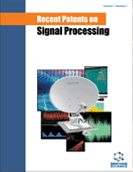Abstract
The ultra wideband telecommunication systems require nowadays mixed signal front end modules like Analogto- Digital Converters with ever increasing cost in terms of speed, power consumption, die area and complexity if the Nyquist rate is respected. Since the signals in various applications are inherently sparse or compressible, a great attention has been recently given to systems that use under-sampling methods without significant information loss. These methods are covered by a signal processing branch known as Compressed (or Compressive) Sensing or Compressive Sampling. A Compressive Sampling approach is useful if it leads to a lower cost solution compared to the cost of the architecture that would be required if Nyquist sampling was adopted or if the signal frequency is so high that no appropriate Nyquist sampler is available at all. A number of recent Compressive Sampling patents will be reviewed in this article focusing on the feasibility of their implementation since the mathematical modeling that is often adopted is based on discrete input values and cannot be directly applied to the real world analog signals. Moreover, computational intensive optimization problems require to be solved in order to fully reconstruct the original input signal from a small number of samples.
Keywords: Compressive sampling (sensing), undersampling, analog digital conversion, VLSI, DSP, Compressive Sampling , Compressive sensing, compressed sensing, compressive sampling methods, multi-band signals, distributed compressed sensing, signal processing, adaptive signal processing, analog-digital converter, ADC, analog projection, SC-CoSaMP method
 172
172

